News
Token $NUMMUS – When Blockchain Meets Online Casinos (Rewarding Users)

Unless you’ve been living under a rock, you’ve probably heard about blockchain technology and its potential to disrupt various industries. It all started with Bitcoin, then Ethereum, and now thousands of projects are using this innovative technology.
The potential of this technology is probably unknown and continues to evolve every day. The latest we have identified is $NUMBERa blockchain-based casino platform that offers new features and benefits for users.
This article will explore how $NUMMUS is bringing blockchain technology to the world of casinos. As you’ll see, the team has designed a staking program, the use of NFTs, and a beautiful architecture, among other things. We’ll look at the benefits of using blockchain in casinos and how the token’s architecture sets it apart from traditional platforms.
Benefits of Using Blockchain Technology in Casinos: The Case Study of $NUMMUS Token
If you’re a casino fan, you’ve seen your fair share of new companies enter the industry. From traditional brick-and-mortar establishments to online casinos, the market has plenty of options. However, only a few casino entrepreneurs have dared to introduce blockchain technology. Or at least, that’s been true until now.
But what exactly are the benefits of using blockchain in the casino niche? And how does Nummus Casino (and $NUMMUS) use it? Below we’ll talk more about it, from NFTs to staking.
The Unique Features of the $NUMMUS Token
The first thing you should know about the project is how it rewards users and token holders. Staking is a very popular concept among cryptocurrency enthusiasts, but it doesn’t usually apply to online casino users. $NUMMUS changes this by creating a system that rewards not only stakers, but also active casino users.
- Staking allows token holders to lock up their tokens and receive additional tokens as a reward.
- You can invest your tokens for up to 12 months and expect an annual return of up to 24% for the longest period.
- Staking involves locking up tokens for a specific period of time (see previous point). The idea is simple: you have the ability to add extra tokens to extend the lockup period.
- Staking is managed by secure and transparent smart contracts, which are regularly audited to ensure their safety.
- Stakers are guaranteed to receive the amount originally staked and any rewards earned once the staking period ends.
Additionally, if you read the project’s whitepaper, you’ll see how $NUMMUS places a lot of emphasis on NFTs. NFTs (or non-fungible tokens, if you prefer) have long been a buzzword in the cryptocurrency world. The token takes it a step further by creating exclusive NFTs that offer lucrative perks and rewards.
- The project’s NFTs provide exclusive benefits and rewards to their owners. An example? We can mention access to unique rewards and privileges in Nummus Casino.
- 25% of Nummus Casino’s net profit is paid to NFT holders in stablecoins (with a ROI of 3.22%).
- The team has only minted 2,500 NFTs and there will never be another one, making them a limited and valuable resource.
Additionally, there are three types of NFTs available in this project’s ecosystem: Fortuna, Jupiter, and Mercury.
- NFT of Fortune They are awarded for every wagered purchase of $5,000 and comprise 25% of the casino’s net profits.
- On the other hand, Jupiter NFTs are only awarded for every staked purchase of $10,000. These tokens also provide a 25% share of the net profits. The idea is that these NFTs should be even more exclusive and valuable than Fortuna’s.
- Lastly, Mercury NFT are awarded for every $1,000 staked purchase and still offer a generous 25% of the casino’s net profits. However, only 500 of these NFTs are available, making them the rarest and most sought-after among collectors.
If you’re worried about the lack of utility in some crypto or NFT projects, $NUMMUS has you covered. The connection between the project’s tokens and the casino is a crucial aspect for this team, providing real-world value and usability.
The architecture of the project
We don’t want to get too technical, but it’s definitely worth taking a look at the token project architecture.
So let’s take a closer look at the technical project:
- Telegram Integration: Thanks to the Telegram Bot API, Nummus Casino uses advanced bots to handle various tasks. Among them, we mention the management of gameplay, player accounts and real-time transactions.
- Cloud-based infrastructure: The backend services that support the bots run on cloud infrastructures for uninterrupted performance even during peak usage periods. This setup also allows for efficient load balancing and automatic scaling to provide uninterrupted service.
- Smart Contracts: Leveraging Ethereum smart contracts, Nummus Casino automates critical tasks such as staking and managing its tokens, while ensuring security and efficiency.
- Security measures: Nummus Casino prioritizes user privacy and security by relying on Telegram encryption protocols. The platform also undergoes regular security audits to maintain integrity and identify vulnerabilities.
Adding A, B, C and D, the project architecture behind $NUMMUS is solid, secure and transparent. While it is not necessary to get lost in its intricacies, it is worth recognizing and appreciating the efforts and professionalism of the team.
Token Assignment (And What It Should Tell You)
If you are used to reading cryptocurrency whitepapers like we are, you will know how important token allocation is. It can make or break a project. The good news is that the team behind this project knows this all too well. Here are some more details:
- The liquidity pool holds 5% of the total tokens and ensures sufficient liquidity for trading on the exchange.
- Airdrops are 5% of token allocation, rewarding early backers with free $NUMMUS.
- The current pre-sale has a 5% assignment and it’s a great opportunity to get in early and take advantage of bonuses and rewards.
- Staking constitutes the largest part of 5%incentivizing users to hold their tokens and participate in governance decisions.
- Affiliates receive 5% of token allocation, encouraging them to promote and bring new users into the project’s ecosystem.
- The bonuses constitute 5% of the award, providing rewards for certain actions within the ecosystem, such as participating in community events or referring friends.
- Consultants receive 5% of tokens, providing valuable expertise and guidance to help ensure the success of $NUMMUS.
- The reserve holds 10% of tokens, acting as a safety net for unforeseen circumstances.
What does this token allocation tell you? First, consider the issue from the perspective of the project community. The fact that a large portion (37.5%) of the tokens go towards staking incentives rather than advisors (2.5%) is essential. This strategy shows that the project community is at the heart of the project. Setting aside a reserve (10%) also shows that the team is prepared for potential problems and prioritizes long-term sustainability.
Additionally, airdrops and bonuses demonstrate the team’s commitment to rewarding early backers and incentivizing active participation within the ecosystem. This helps with community engagement and supports the overall growth of the Nummus project.
Our Conclusions on $NUMMUS (and What to Expect from the Future)
$NUMMUS (from the makers of Nummus Casino) has the potential to change the online gambling industry using blockchain technology. With a focus on security, $NUMMUS is an interesting new project you might want to check out.
Also consider the team roadmap. The team whitepaper explains it better, but for the sake of this review, keep in mind that:
- The roadmap includes three phases
- Phase 1 is about building the foundation for Nummus Casino and integrating it with blockchain technology.
- Phase 2 focuses on launching the project to the public, emphasizing the importance of marketing and achieving the set goals.
- Phase 3 brings even more innovation, including the launch of a poker room and strategic token buyback/burning.
There is also the matter of the project’s ECO model. This strategy involves a holistic approach where the team reinvests all proceeds from the sale of $NUMMUS into the casino. Additionally, 25% of the casino’s net profits will allow the project to buy back the value of the token. The model works as a way to ensure long-term sustainability and growth.
Curious to learn more about the team behind $NUMMUS? For more information, please refer to project website and the project’s social pages below.
Disclaimer: This is a paid publication. The statements, views and opinions expressed in this column are solely those of the content provider and do not necessarily represent those of Bitcoinist. Bitcoinist does not guarantee the accuracy or timeliness of the information available in such content. Do your own research and invest at your own risk.
News
Blockchain Technology Will Transform Water Access and Management Globally

Disclosure: The views and opinions expressed here are solely those of the author and do not represent the views and opinions of the crypto.news editorial team.
Access to clean water is a basic human need, yet billions of people around the world still struggle to get it. According to the World Health Organization, over 2 billion people live in countries suffering from severe water stress, and this number is expected to continue to grow due to climate change and population growth.
Traditional water management systems have struggled to address these challenges, often hampered by inefficiencies, lack of transparency, and misallocation of resources. Blockchain technology offers a promising solution to these challenges, providing equitable access and sustainable use of this crucial resource.
The current state of water management
Water management today faces several pressing issues. Inefficiencies in water supply, distribution, and use, coupled with a lack of real-time monitoring, often result in resource waste and misallocation. Many water sources fail to realize their full potential due to infrastructure and financing shortfalls. For example, the Environmental Protection Agency (EPA) report indicated that the United States would need to invest $625 billion over the next 20 years to repair, maintain and improve the country’s drinking water infrastructure due to aging pipes and other infrastructure problems. Additionally, in the United States alone, household leaks can to waste nearly 900 billion gallons of water per year nationwide. This is equivalent to the annual domestic water consumption of nearly 11 million homes.
Furthermore, corruption and mismanagement of water resources can cause unequal distribution, with disadvantaged communities often bearing the brunt of water scarcity. For example, South Africa is struggling with myriad challenges to its water security: drought, inadequate water conservation measures, outdated infrastructure, and unequal access to water resources. The country faces significant water scarcity, with demand expected to outstrip supply by 2030, creating a projected gap of 17%.
Furthermore, the global water industry is highly monopolized, with a few key players controlling a significant share of the market. These companies exert substantial influence over the water supply chain, often prioritizing profit over equitable distribution and environmental responsibility. This concentration of power can lead to inflated prices and limited access for vulnerable populations. The global bottled water market alone is projected to reach $509.18 billion by 2030, with these large companies capturing a significant share of revenue. This monopolization exacerbates existing inequalities in water access and highlights the need for more decentralized and community-driven water management solutions.
Source: Grand View Search
The potential of blockchain in water management
Blockchain technology can address these issues by providing a transparent, secure, and decentralized platform for water resource management. This approach offers several advantages:
- Transparency and accountability. Blockchain’s immutable ledger ensures that all transactions and data entries are transparent and cannot be changed once recorded. This transparency can reduce corruption and ensure that water resources are allocated fairly and efficiently. For example, blockchain can be used to track water usage from source to end user, providing a clear record of how water is distributed and used. This level of transparency can help hold authorities accountable and manage water resources sustainably.
- Efficient resource management. Blockchain can facilitate the creation of smart contracts, which are self-executing contracts with the terms of the agreement written directly into the code. These contracts can automate water distribution based on real-time data, directing water to where it is needed most. For example, smart contracts could be used to manage urban water supply systems, automatically adjusting water distribution based on real-time consumption patterns and demand. This can help optimize water use, reduce waste, and ensure that households and businesses receive the right amount of water at the right time.
In Dubai, the Dubai Electricity and Water Authority (DEWA) has implemented a blockchain-based smart water network initiative as part of its broader smart city strategy. This project integrates blockchain technology with IoT sensors to monitor water usage in real time, manage distribution, and detect leaks. The decentralized ledger ensures data integrity and transparency, enabling more efficient water management and reduced waste. DEWA’s initiative aims to improve sustainability and resource management in the rapidly growing city, highlighting the potential of blockchain to support urban water management and conservation efforts.
Community participation and ownership
Through blockchain, individuals can directly control and monetize their access to water resources, eliminating the need for third-party intermediaries. This direct control model allows local communities to make collective and transparent decisions about their water use. By managing their water directly from the source, communities can tailor water management practices to their specific needs, promoting equitable distribution and encouraging a sense of accountability and stewardship.
Additionally, future models could allow people to monetize their access to water through web3 technologies. For example, a community-to-business (C2B) model could allow people to sell water directly to companies. In this model, people do not have to own the water directly, but can profit by staking their tokens during event sales pools. This approach not only supports sustainable water management, but also creates economic opportunities for community members. Additionally, a “Burn to Secure” protocol can be used to provide water allocation rights. This protocol provides a true sense of water security and financial opportunity by allowing people to redeem their rights. This system not only secures future water allocations, but also increases token scarcity and value.
Additionally, a pure sense of investment is achieved through investments in water sources. This leads to potential financial returns and dividends by addressing the inefficiencies in water supply mentioned above. By investing to finance infrastructure projects, such as building factories and improving distribution systems, more water can be brought to communities, creating additional economic opportunities.
Monetizing water access through the C2B model, the “Burn to Secure” protocol, and investments in water sources all generate economic benefits for the community, promoting a more equitable and efficient water management system.
Overcoming challenges
While blockchain technology has the potential to improve water management, there are challenges to its adoption. The complexity of blockchain systems and the need for technological infrastructure can be barriers, especially in developing regions. Additionally, there are concerns about the significant energy consumption of blockchain networks. However, technological advances and the development of more energy-efficient blockchain solutions are helping to alleviate these concerns. Additionally, education and capacity building are key to ensuring stakeholders understand how to effectively use blockchain technology. Governments, NGOs, and private sector partners need to work together to provide training and support to communities and water management authorities.
Blockchain technology offers a practical and effective means to improve water management. In addition to addressing inefficiencies, blockchain empowers communities, promotes sustainable practices, and opens up new economic opportunities through models like community-to-business (C2B). As we face the growing challenges of climate change and population growth, blockchain is not only an innovative solution, but represents a fundamental shift in the way we manage and value water resources. Adopting blockchain in water management is essential to creating a sustainable and equitable future by changing the way we interact with and protect our most vital resource.

Jean-Hugues Gavarini
Jean-Hugues Gavarini is the CEO and co-founder of LAKE (LAK3), a real-world asset company leveraging blockchain technology to decentralize access to the global water economy. LAKE aims to ensure access to clean water for all, protect water resources, and deliver water to those in need through innovative technologies. Jean-Hugues has a diverse career spanning the luxury, fashion, and footwear industries. His career path includes notable successes at Mellow Yellow, Cremieux, and Tod’s. Raised between Silicon Valley and the French Alps, Jean-Hugues has always been immersed in technology and freshwater resources. In 2018, Jean became the CEO of Lanikea Waters, a water solutions entity based in the French Alps. In 2019, the concept of LAKE was born, embodying his commitment to innovation and sustainability.
News
Blockchain and AI Expo 2024
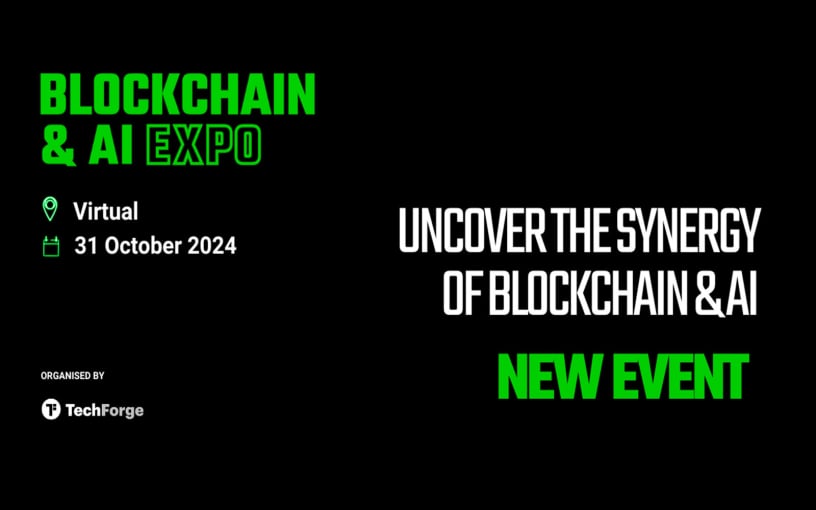
With rapid advances in the world of AI and blockchain, there are opportunities to leverage the security and transparency features of blockchain to improve the reliability and trust of AI systems and data transactions.
Explore the synergy of these advanced technologies in virtual mode Blockchain and AI Expowhich takes place on October 31, 2024 TO 10:00 GMT.
The event features cutting-edge presentations led by leading experts in evolving fields. Presentations are set to explore opportunities and challenges in the fusion of blockchain and AI, real-world applications, ethics, innovations in environmental sustainability, and more!
Gain a comprehensive understanding of how these technologies can synergistically drive innovation, optimize operations, and promote strategic growth opportunities. Develop your knowledge to facilitate informed decision making and give your company a competitive edge in the growing technology landscape.
News
Nigeria Eyes National Blockchain Nigerium for Data Sovereignty
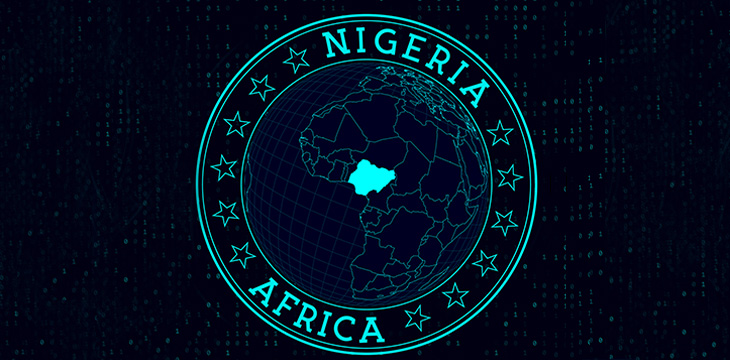
Nigeria is keeping an eye on a new native blockchain network to protect the country’s data sovereignty.
According to local media, a team from the University of Hertfordshire has proposed the new blockchain, Nigeriato the National Information Technology Development Agency (NITDA).
Chanu Kuppuswamy, who leads the team, argued that relying on blockchain networks whose developers are located in other regions poses national security risks to the Nigerian government. He further said that Nigerium would allow the West African nation to customize the network to meet specific needs, while also promoting data sovereignty.
In his presentation, Chanu cited the recent migration of Ethereum to test of participation (PoS) consensus as an instance in which no Nigerians were involved but whose impact is far-reaching.
“Developing an indigenous blockchain like Nigerium is a significant step towards achieving data sovereignty and promoting trust in digital transactions in Nigeria,” he said.
While receiving the proposals in Abuja, NITDA’s Kashifu Abdullahi acknowledged the benefits a local blockchain would bring to Nigeria, including increased security of citizens’ data.
However, a NITDA spokesperson later clarified that Nigerium is still at the proposal stage and that the government has not yet decided whether to proceed or not.
“The committee is still discussing the possibility with stakeholders. Even if a decision is finally made, there is no guarantee that the name will be Nigerium,” the spokesperson told the media.
Nigerium’s reception in the country has been mixed. Some, like financial analyst Olumide Adesina, To say the network is “dead on arrival”. He believes the Nigerian government’s poor record in following through on its big technology plans will claim another victim. He pointed to the eNaira as a missed opportunity whose chances of success were much higher than those of Nigerium.
Others welcomed the proposal. Chimezie Chuta, who chairs the renewed The Nigerian Blockchain Policy Committee is “extremely optimistic“that Nigerium will be more successful than eNaira.
Speaking to a local news agency, Chuta stressed that eNaira failed because the central bank initiated the project on its own, without involving any stakeholders.
“They just cooked it and expected everyone to like it. [With Nigerium]there will be a lot of collaboration,” he said.
Registration of property title, digital identity and Certificate Verification are among the use cases that Nigerium is expected to initially target. However, Nigeria has already made progress in some of these fields through public blockchains.
SPPG, a leading school in governance and politics, announced in May the country’s first blockchain certificate verification system. Built on the The BSV BlockchainIt was developed in collaboration with the blockchain data recording company VX Technologies and local lender Sterling Bank.
Watch: The Future Has Already Arrived in Nigeria
 Italian: https://www.youtube.com/watch?v=M40GXUUauLU width=”560″ height=”315″ frameborder=”0″ allowfullscreen=”allowfullscreen”>
Italian: https://www.youtube.com/watch?v=M40GXUUauLU width=”560″ height=”315″ frameborder=”0″ allowfullscreen=”allowfullscreen”>
New to blockchain? Check out CoinGeek Blockchain for Beginners section, the definitive guide to learn more about blockchain technology.
News
Cambodian CBDC Developer to Build Palau Bond Market on Blockchain: Report

A Japanese fintech developer will build a blockchain-based bond market gateway for Palau, aiming to launch a trial in 2024 and a full launch the following year.
Japanese fintech developer Suramitsubest known for developing a central bank digital currency (CBDC) for Cambodia, is intended to build a Blockchain-gateway to the bond market based on the Pacific island nation of Palau, Nikkei He learned.
Soramitsu won the contract and plans to introduce the market on a trial basis in fiscal 2024, with a full launch scheduled for the following year, allowing the Palauan government to issue bonds to individual investors and efficiently manage principal and interest payments, according to the report.
The total cost of the project is estimated at several hundred million yen ($1.2 million to $5.6 million), less than half the cost of a non-blockchain alternative, people familiar with the matter said. The project has reportedly received support from Japan’s Ministry of Economy, Trade and Industry, with Japan’s foreign and finance ministries providing strategic and management advice on the project.
Soramitsu’s successful development of Cambodia’s CBDC in 2020 has boosted its reputation, with the digital currency’s popularity soaring, with over 10 million accounts opened by December 2023, representing 60% of Cambodia’s population. Following this, Cambodia’s central bank governor Chea Serey indicated intends to expand the reach of its CBDC internationally, particularly through collaboration with UnionPay International, the Chinese card payment service, and other global partners.
While Soramitsu’s work in Cambodia has been well received, the long-term popularity of CBDCs remains to be seen. As of late June, crypto.news reported a sharp drop in activity in India’s digital currency, the e-rupee, after local banks stopped artificially inflating its values.
According to people familiar with the matter, the Reserve Bank of India managed to hit the 1 million retail transaction milestone last December only after the metrics were artificially infiltrated by local banks, which offered incentives to retail users and paid a portion of the bank’s employees’ salaries using the digital currency.
-

 News1 year ago
News1 year ago“Captain Tsubasa – RIVALS” launches on Oasys Blockchain
-

 Ethereum1 year ago
Ethereum1 year agoComment deux frères auraient dérobé 25 millions de dollars lors d’un braquage d’Ethereum de 12 secondes • The Register
-
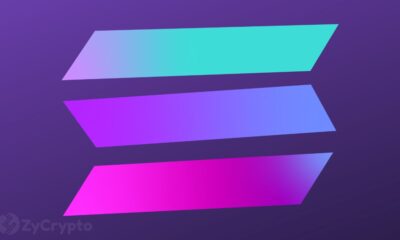
 News1 year ago
News1 year agoSolana ranks the fastest blockchain in the world, surpassing Ethereum, Polygon ⋆ ZyCrypto
-

 Videos1 year ago
Videos1 year agoHistoric steps for US cryptocurrencies! With a shocking majority vote!🚨
-

 Videos1 year ago
Videos1 year agoIs Emorya the next gem💎 of this Bitcoin bull run?
-

 News1 year ago
News1 year agoSolana Surpasses Ethereum and Polygon as the Fastest Blockchain ⋆ ZyCrypto
-

 Videos1 year ago
Videos1 year agoNexus Chain – Ethereum L2 with the GREATEST Potential?
-

 Ethereum1 year ago
Ethereum1 year agoScaling Ethereum with L2s damaged its Tokenomics. Is it possible to repair it?
-
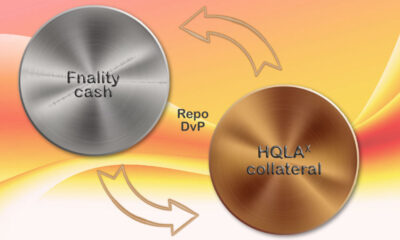
 News1 year ago
News1 year agoFnality, HQLAᵡ aims to launch blockchain intraday repositories this year – Ledger Insights
-
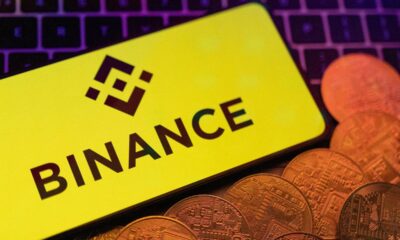
 Regulation1 year ago
Regulation1 year agoFinancial Intelligence Unit imposes ₹18.82 crore fine on cryptocurrency exchange Binance for violating anti-money laundering norms
-
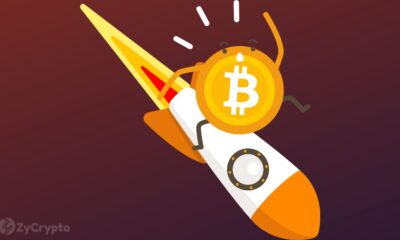
 Bitcoin1 year ago
Bitcoin1 year agoBitcoin Drops to $60K, Threatening to Derail Prices of Ether, Solana, XRP, Dogecoin, and Shiba Inu ⋆ ZyCrypto
-

 News1 year ago
News1 year agoSendBlocks Debuts with Major Support to Improve Blockchain Data Management










